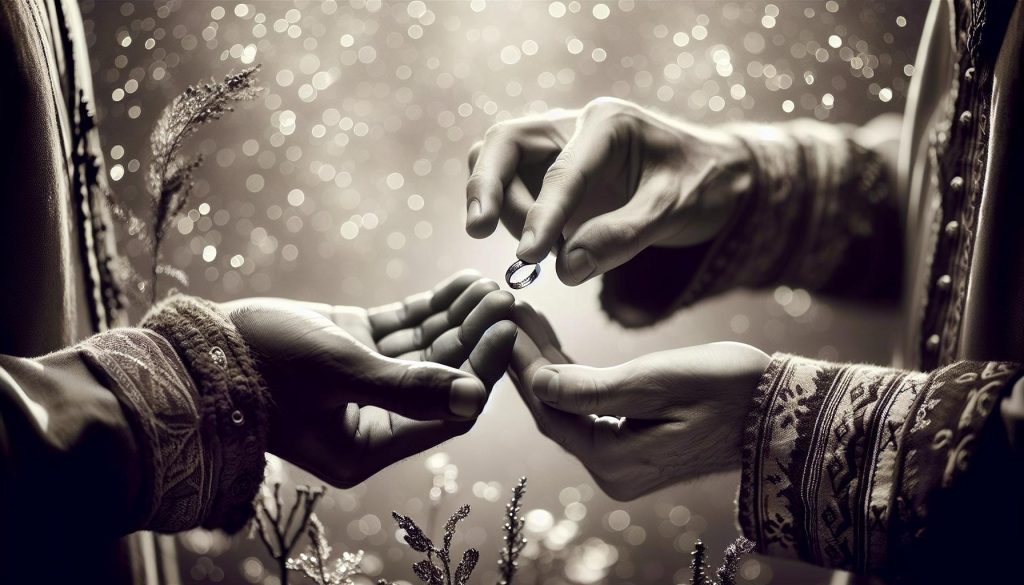Choosing which hand to wear your wedding ring on is more than just a matter of preference; it’s steeped in tradition and symbolism. While many cultures traditionally place the ring on the left hand, the modern approach allows for personal expression and varied customs. This decision can evoke curiosity and even confusion for couples navigating their wedding journey. Are you concerned about which hand best suits your relationship or reflects your shared values? Exploring the historical roots and contemporary viewpoints can empower you to make an informed choice that resonates with your love story. Join us as we unravel the customs and modern interpretations surrounding this cherished tradition, ensuring your wedding ring becomes a perfect symbol of your commitment.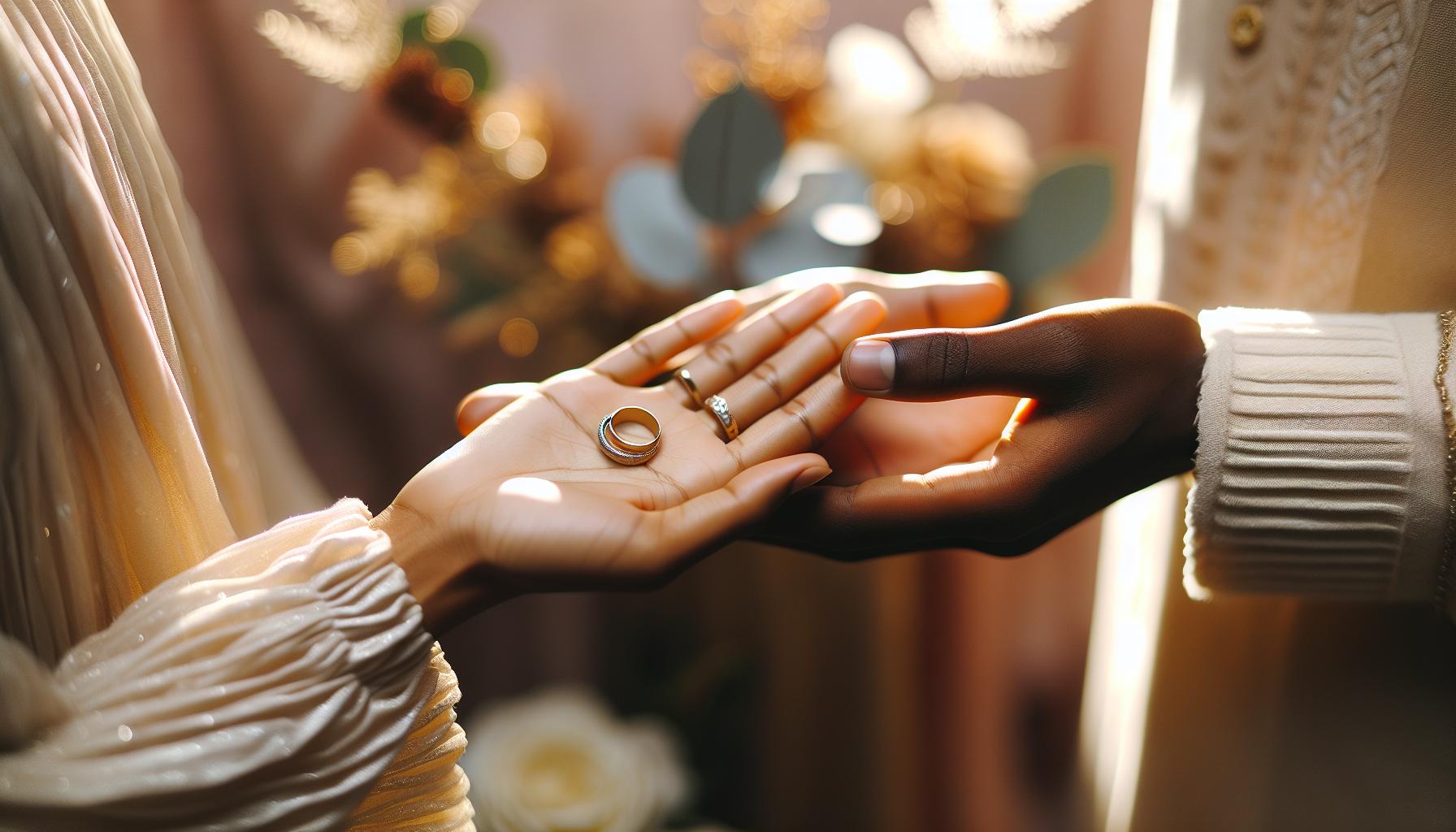
Which Hand to Wear Your Wedding Ring: Understanding Tradition
Choosing the right hand to wear your wedding ring is a decision steeped in rich tradition and cultural significance. Many cultures around the world have their unique customs regarding ring placement, often influenced by long-standing beliefs about love, commitment, and spirituality. For instance, the left hand is commonly associated with emotions and heart connections in various cultures, which is why many Western couples wear their wedding rings on the left hand. The traditional belief stems from the notion that the left hand has a vein-a “vena amoris” or vein of love-that runs directly to the heart, symbolizing a direct connection between your love and your heart’s beat.
Conversely, in some Eastern European and Orthodox traditions, wedding rings are worn on the right hand. This placement can signify a couple’s devotion while honoring specific local customs. For instance, in countries like Greece and Russia, the right hand symbolizes strength and authority, making it a powerful emblem for a partnership. Understanding these variations not only enriches your own wedding experience but also emphasizes the beauty of how love can be celebrated differently across cultures.
As couples today navigate the balance of tradition and personal preference, modern rules offer flexibility in wedding ring placement. Many now choose the hand that feels more comfortable or meaningful to them, regardless of conventional expectations. It’s not uncommon to blend traditions, such as wearing the engagement ring on one hand and the wedding band on the other, creating a unique representation of their bond. Ultimately, the choice of which hand to wear your wedding ring should resonate with your values and shared significance as a couple, making your decision as heartfelt as the love it symbolizes.
The Meaning Behind Wedding Ring Placement
Choosing which hand to wear your wedding ring is not merely a question of fashion; it’s deeply intertwined with symbolism, love stories, and cultural significance. The placement of your ring can evoke emotional connections and convey meaning through its very position. For many, the act of slipping that ring onto a finger is a celebration of unity and commitment. It becomes a tangible symbol of the love you share and the journey you are embarking on as a couple.
Traditionally, in Western cultures, wearing the wedding ring on the left hand is prevalent, stemming from the belief in a special vein-the “vena amoris”-that runs directly to the heart. This notion conjures images of the heart’s rhythm beating in sync with the love shared between partners. Many couples derive comfort from this symbolism, feeling that their wedding ring’s placement reflects their emotional connection. It transforms a simple piece of jewelry into a lasting reminder of their devotion and partnership.
However, cultural perspectives on ring placement vary widely. In some cultures, such as those in Eastern Europe and Orthodox traditions, the right hand is preferred for its symbolism of strength and authority. This choice often signifies the couple’s commitment while paying homage to their heritage. Such variations highlight the rich tapestry of global wedding customs, offering couples the opportunity to explore and select what resonates most with their shared identity and values.
Ultimately, the meaning behind where you choose to wear your wedding ring goes beyond trends; it reflects personal significance and cultural backgrounds, allowing for a more intimate representation of your love story. Whether you opt for the traditional left hand or the assertive right, what matters most is the sentiment behind it-an enduring testament to your unique bond.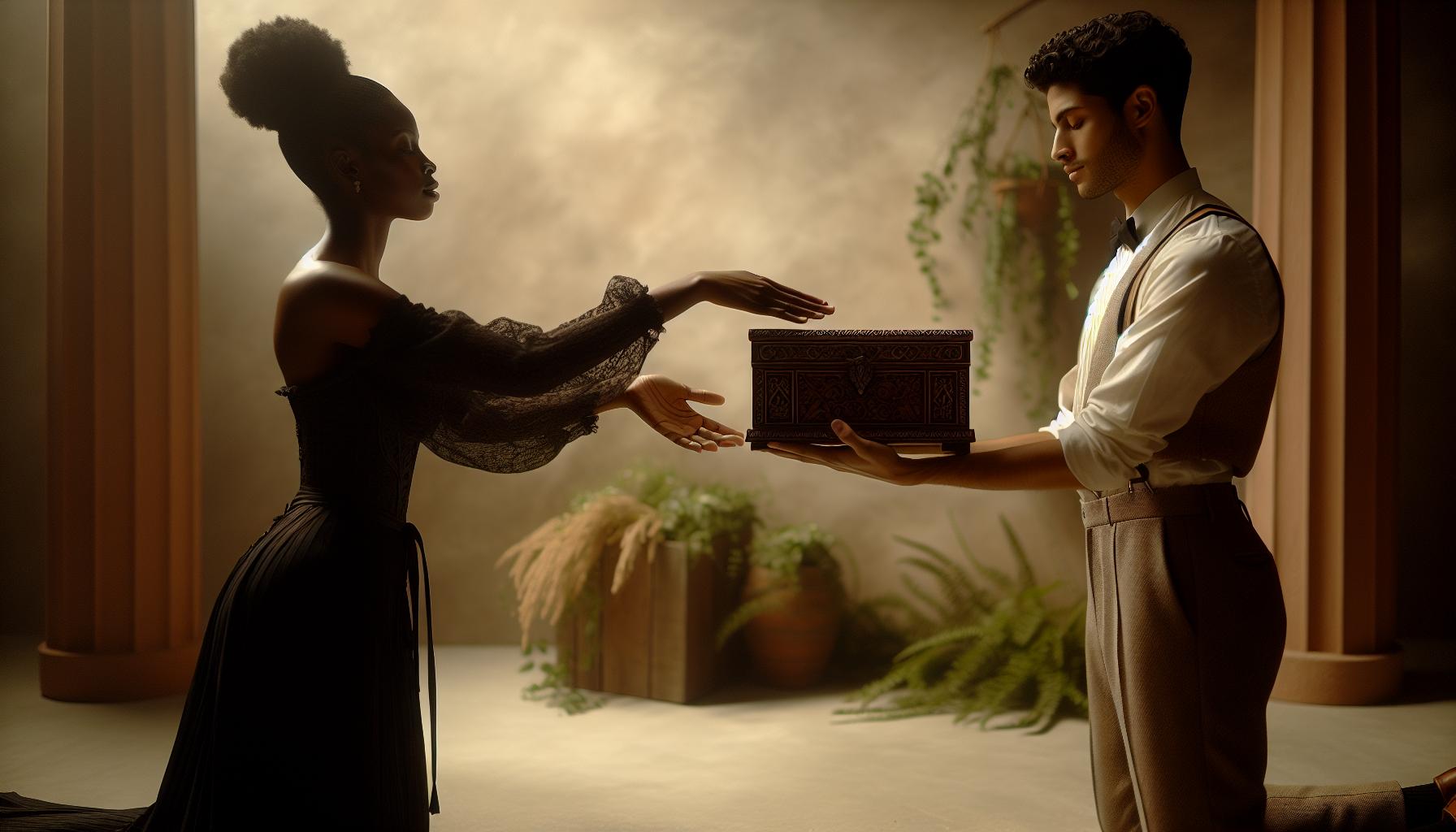
Common Wedding Ring Traditions Across Cultures
When it comes to wearing wedding rings, traditions vary greatly across cultures, each adding a rich layer of meaning and significance to this beautiful symbol of love and commitment. For many couples, understanding these traditions not only honors their own heritage but also enables them to create a unique narrative that reflects their shared journey.
In many Western cultures, it is customary for brides and grooms to wear their wedding bands on the left hand, a practice stemming from the age-old belief in the “vena amoris,” the vein that supposedly runs directly to the heart. This long-standing tradition beautifully symbolizes love’s direct connection to one’s emotions and heart. Conversely, in several Eastern European and Orthodox cultures, the right hand is preferred for ring placement. This choice is steeped in symbolism, often representing strength, authority, and the union of two families, marking the couple’s pledge in a way that honors cultural heritage.
The diversity doesn’t stop there; various cultures introduce their own unique elements to wedding ring traditions. For example, in some Indian traditions, the bride wears the wedding ring on her right hand, while in others, the engagement ring is presented on the right hand and moved to the left hand after the marriage ceremony. In Scandinavian countries, many engaged couples wear their engagement rings on the right hand until the wedding, at which point they transition to the left hand to signify their new status as married.
As couples consider how to reflect their values and identities in their wedding ring placements, it can be inspiring to explore these traditions. Engaging with family heritage or incorporating elements from different cultures can create a deeply personalized experience. Ultimately, whether choosing the left hand for its romantic symbolism or the right hand for its strength, the most important aspect is the love story that these rings represent as they are worn with pride and joy.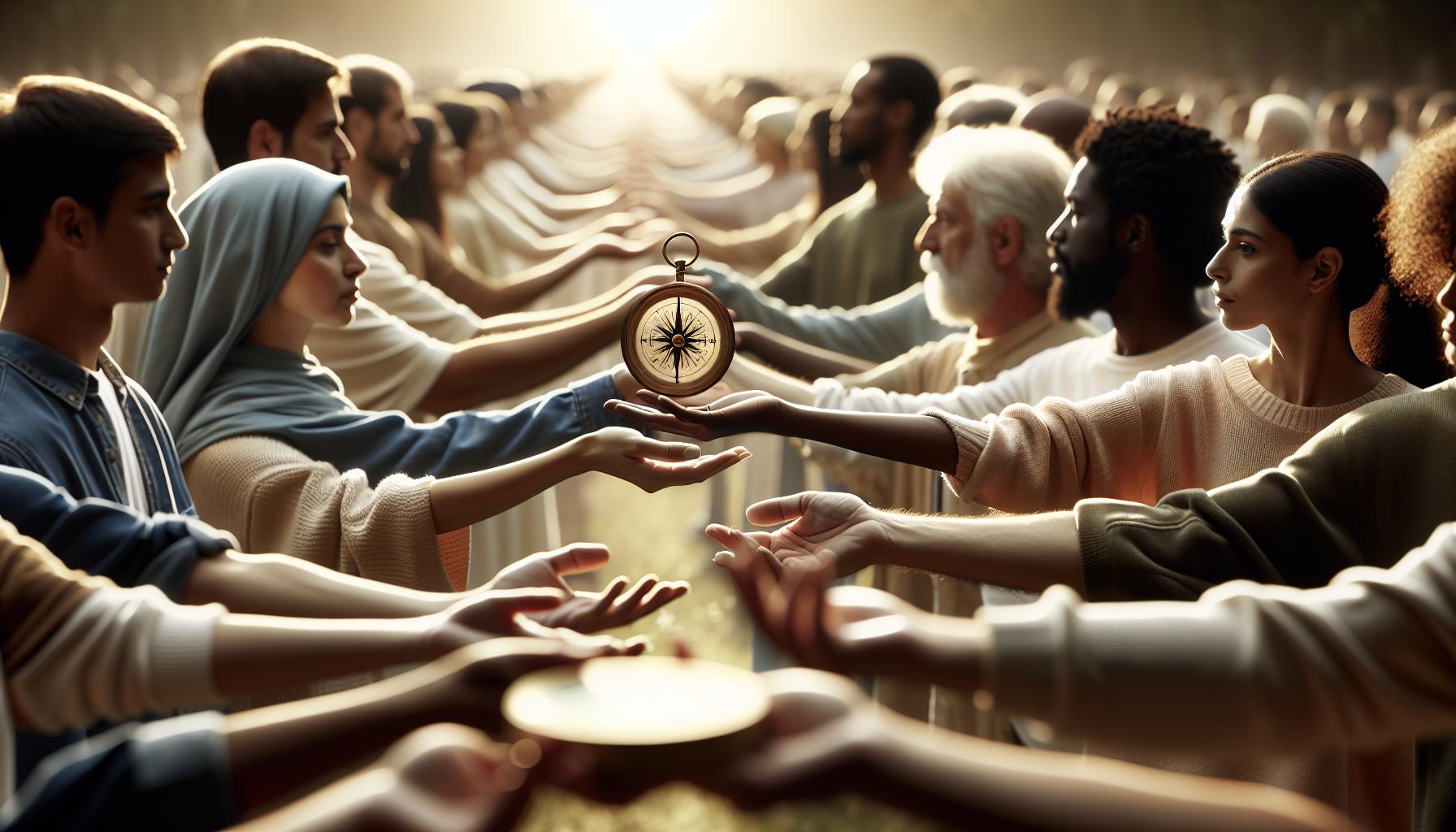
Modern Rules for Choosing the Right Hand
Choosing the right hand to wear your wedding ring is a decision that transcends mere aesthetics; it is rooted in personal significance, cultural traditions, and modern interpretations. With the evolving dynamics of relationships and the blending of traditions, many couples today approach this decision with an openness to adapt and personalize their choices. Whether guided by family customs, personal experiences, or contemporary influences, the most important aspect is that the choice resonates with the couple’s unique story.
In many modern contexts, the left hand remains the most popular choice, particularly in Western cultures, as it symbolizes romantic love and commitment. However, couples are increasingly embracing the idea of wearing their rings on the right hand to signify equality and partnership. In this vein, couples should consider their individual preferences and what attributes they wish to express through their ring placement. Here are some modern guidelines to think about:
- Personal Significance: Reflect on what the rings mean to you both. If wearing a ring on a specific hand holds special meaning or aligns with your belief system, let that guide your choice.
- Inclusivity of Traditions: Feel free to draw from both partners’ cultural backgrounds. Mixing traditions can create a beautiful, blended representation of your love.
- Symbolism: Determine whether you want to express different aspects of your relationship; for instance, using the left hand for traditional love symbols and the right hand to portray unity and strength.
- Comfort and Practicality: Consider your daily activities. Some may find that wearing a ring on the non-dominant hand is more comfortable and practical for work or sports.
Ultimately, the decision of which hand to wear your wedding ring is profoundly personal. By combining tradition with modern sensibilities, couples can find a solution that honors their values while celebrating their commitment. Embrace the joy of this journey and remember that the true essence of your wedding ring is the love and promise it represents, regardless of which hand it adorns.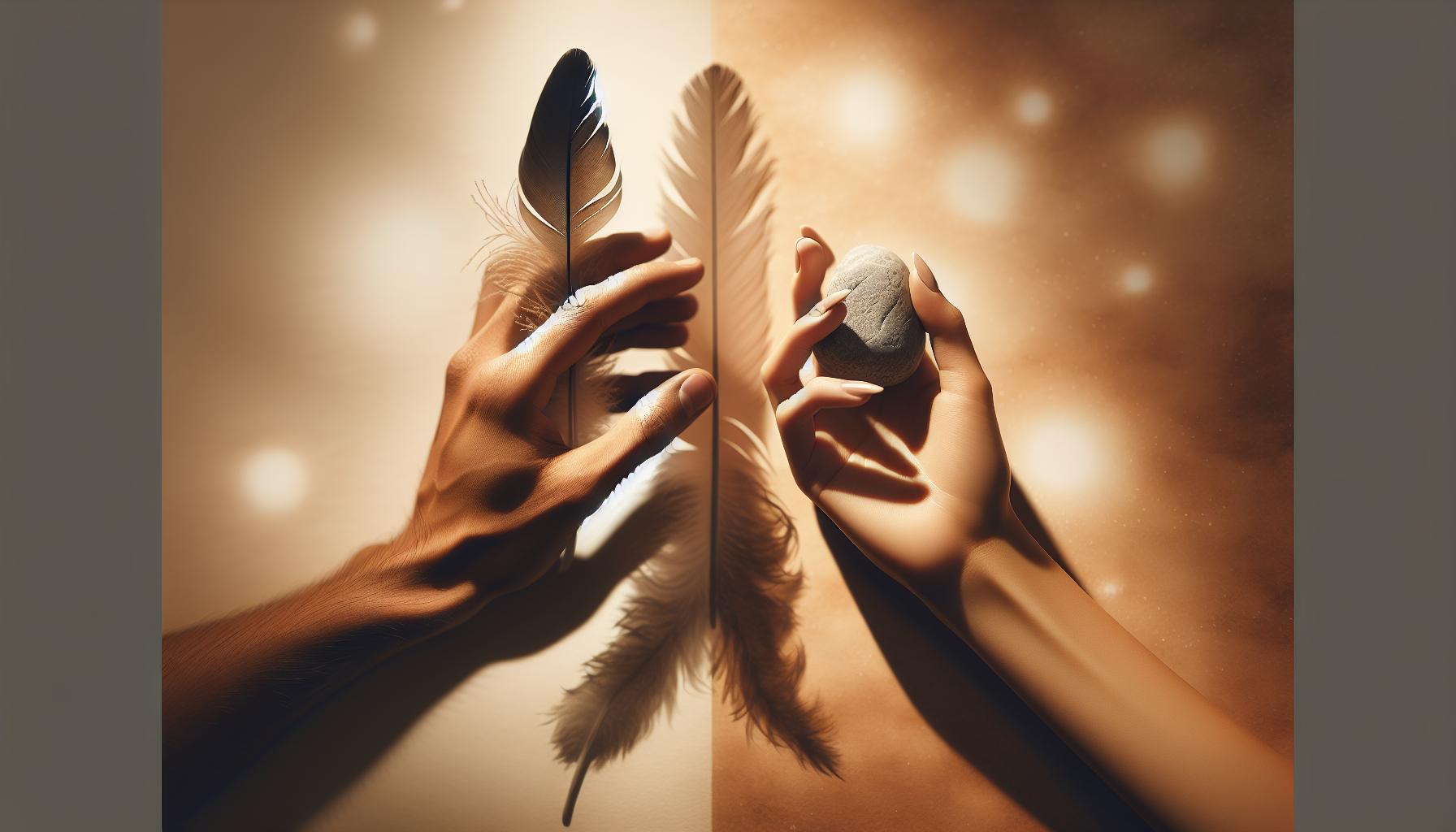
Left Hand vs. Right Hand: A Symbolic Comparison
Choosing between the left hand and the right hand for your wedding ring can evoke a rich tapestry of meanings and symbolize the unique dynamics of your relationship. Traditionally, the left hand has long been esteemed across many cultures as the preferred choice for wedding rings, believed to connect directly to the heart through the “vena amoris,” or the vein of love. Wearing the ring on this hand signifies deep romantic love and commitment, filling the gesture with an enduring aura of classic devotion. Many couples take comfort in this tradition, reinforcing their promise with a symbol that resonates with time-honored beliefs.
Conversely, the right hand is increasingly recognized for its representation of equality and partnership. As societal norms evolve, many couples are embracing this alternative, desiring a more balanced representation of their love. Wearing a ring on the right hand can convey that both partners are equal in their commitment and responsibilities within the relationship. This choice challenges conventions and emphasizes a modern understanding of marriage as a partnership rather than a hierarchical bond. In regions like Eastern Europe and Latin America, the right hand is often favored for both engagement and wedding rings, showcasing the cultural variations in this important practice.
For couples deliberating between the two hands, it’s essential to consider what resonates most with their values. The left hand may evoke traditional romantic imagery, while the right may symbolize a contemporary partnership. Imagine the possibilities and narratives that each choice can communicate. Here are some factors to guide your decision:
- Cultural Influences: Acknowledge your own heritage and any family traditions that might influence your choice.
- Personal Preferences: Reflect on what feels right for both of you. Are you inclined towards traditional symbolism, or do you resonate more with modern partnerships?
- Practical Considerations: Determine if wearing a ring on your dominant vs. non-dominant hand might offer greater comfort, particularly in daily activities.
- Expression of Values: Recognize what you want to convey through the symbol of your union. The choice of hand can greatly influence the narrative you wish to tell about your love story.
Ultimately, whether you choose to adorn the left hand, celebrated for romance, or the right hand, championing equality, remember that your decision should reflect the essence of your partnership. Embrace the beauty of this choice, allowing it to become a meaningful part of your wedding narrative that honors both tradition and modern love.
How Engagement Rings Fit into the Tradition
The engagement ring serves as a significant symbol in the journey toward marriage, representing a promise to love and support one another. Traditionally, it is worn on the ring finger of the left hand, a practice originating from the belief that the “vena amoris,” or the vein of love, runs directly from that finger to the heart. This custom enriches the meaning behind the engagement ring, intertwining it with the romantic acts leading up to the wedding.
Upon exchanging wedding vows, many couples choose to stack their wedding bands alongside their engagement rings, further highlighting their commitment. In doing so, the wedding band typically follows the engagement ring on the same finger, maintaining the left hand’s longstanding tradition. This connection visually reinforces the unity of both promises-the engagement and the marriage-creating a beautiful sentiment that many brides opt to honor.
However, modern customs and preferences are also evolving. Some individuals are beginning to explore the idea of wearing their engagement ring on the right hand or beyond the traditional left-handed placement. This choice can signify a new chapter and a couple’s commitment to equality, blending personal style with symbolic depth. Whether you choose to uphold established traditions or chart a new course, remember that your engagement ring’s placement should resonate with your shared values and unique love story.
Here are a few considerations for couples navigating their engagement and wedding ring choices:
- Personal Style: Reflect your personal tastes-choose a ring style and placement that embodies your individuality.
- Comfort: Ensure that the rings you select don’t hinder daily activities; practicality can enhance your experience.
- Sentimental Value: Consider the story behind your engagement ring. If it has family significance, treat its placement with honor.
- Communication: Have open discussions about what each ring symbolizes for both partners, ensuring that the decision feels right for both.
Ultimately, the way you integrate your engagement ring into your wedding tradition should reflect the essence of your relationship. Celebrate the love you share, whether through treasured traditions or modern expressions, knowing that your choices are beautifully personal and meaningful.
Changing Trends in Wedding Ring Styles
As couples embark on their wedding journey, the choice of wedding rings can symbolize not just unity and love but also personal style and modern values. Over recent years, have ushered in a delightful array of options, reflecting individual tastes and breaking free from conventional molds. Couples today are embracing unique designs, materials, and placements, making their rings a true representation of their relationship and shared future.
Modern weddings often celebrate individuality, leading many to explore unconventional choices. For example, rings crafted from alternative materials like rose gold, titanium, or recycled metals have gained popularity for their distinctive looks and environmentally-friendly qualities. Additionally, many couples opt for customized rings that incorporate unique gemstones or personal engravings, allowing them to tell their love story through their jewelry. These personal touches not only make the rings special but also express the couple’s values and style preferences.
Another trend gaining traction is the concept of stacking rings. This allows individuals to mix and match wedding bands and engagement rings, providing versatility while creating layers of meaning. Couples are increasingly seen wearing various combos that merge vintage aesthetics with contemporary flair, showcasing a unique narrative that reflects their evolving relationship. Furthermore, the rise of alternative styles, such as minimalist designs or nature-inspired motifs, speaks to a broader cultural shift towards simplicity and authenticity in marital symbols.
Amidst all these exciting developments, it’s essential for couples to choose wedding rings that resonate with both partners. Open communication about preferences and expectations can lead to meaningful decisions that honor personal styles while respecting traditional values. Sharing this decision-making journey can deepen connections and ensure that every glance at the wedding ring serves as a cherished reminder of the love and commitment shared between partners.
What If Your Tradition Conflicts with Common Practices?
When planning a wedding, couples often encounter varying traditions regarding which hand should bear their wedding rings. In many Western cultures, it’s customary to wear the wedding band on the left hand, symbolizing the closeness of the heart. However, numerous cultures present different customs, leading to potential confusion or conflict for couples who may come from divergent backgrounds. Understanding how to navigate these differences with grace can enhance not only the ceremony but the relationship itself.
If traditional practices from one partner’s culture dictate that the wedding ring be worn on the right hand, yet the other partner’s upbringing follows the left-hand custom, it’s essential to approach this topic with open dialogue. Couples might consider sharing the meanings of their respective traditions, fostering appreciation for one another’s backgrounds. For instance, in some Eastern European countries, the right hand is preferred because it is thought to be the hand of power and strength. Meanwhile, many Latin American cultures follow the tradition of the left hand, signifying loyalty and love.
To reconcile these differences and create a unique tradition that resonates with both partners, consider the following approaches:
- Mix and Match: One partner can choose to wear the wedding band on the left hand while the other wears it on the right hand. This demonstrates a blending of traditions and is a tangible representation of unity.
- Customized Placement: Some couples opt to have a joint commitment ceremony where they can choose which hand to wear their rings based on mutual understanding. This event can highlight the importance of both partners’ heritages.
- Converse with Family: Engaging family members in discussions may reveal surprising support for a non-conventional choice. They may appreciate the modern approach, which celebrates diversity in traditions.
- Focus on the Symbol: Ultimately, the meaning behind the wedding ring is far more significant than the specific hand that it adorns. Prioritize the commitment it represents rather than allowing tradition alone to dictate your decision.
Every couple’s journey is unique, and part of that journey includes negotiating and integrating customs that celebrate their love. When traditions clash, viewing it through a lens of creativity and inclusion can turn potential challenges into cherished stories and symbols of respect between partners. Personalizing the rings’ placement not only honors individual backgrounds but also paves the way for future traditions within the relationship. Cherishing both love and tradition leads to a more profound appreciation for the partnership formed, reinforcing the bonds of unity and understanding.
Customizing Your Wedding Ring Placement for Personal Significance
The placement of wedding rings, while steeped in tradition, offers a beautiful opportunity for couples to express their unique love story. In an era where individualism and personalization are celebrated, customizing the way you wear your wedding ring can transform the act of wearing it into a profound symbol of your partnership. Every couple has a tale, and the position of their wedding ring can be an integral part of that narrative, representing not just their commitment, but the blend of their backgrounds, beliefs, and hopes for the future.
Finding a personal significance in ring placement can involve myriad considerations. For instance, some couples choose to wear their rings on different hands or even on different fingers, allowing each partner’s cultural practices or preferences to be represented. This approach not only showcases the couple’s unique identity but also honors their respective heritages. Creating a new shared tradition could mean deciding together on which hand the rings will adorn during the ceremony, making it a moment of unity that solidifies your bond.
Communicating openly about your preferences and the meanings behind them can lead to deeper understanding and appreciation between partners. You might explore the history of your family traditions or even forge a completely new pathway that symbolizes your relationship. Sharing stories about what rings represent in your cultures and families can spark meaningful conversations, potentially leading you to innovative placements. For instance, one partner may choose to wear the ring on the right hand to denote power and strength, while the other opts for the left to signify connection to the heart.
In addition to combining traditions, couples can personalize the symbolism through ring design itself. Custom engraving or selecting gemstones that hold specific meanings can add another layer of significance, regardless of the hand on which the ring is worn. Ultimately, the ring’s placement should resonate with you both, embodying your love’s essence. By focusing on what feels right for you as a couple, you’re not only celebrating the day but also crafting a living legacy of your journey together.
The Psychology of Wearing Your Ring on Different Hands
The choice of which hand to wear your wedding ring on can hold profound psychological significance, reflecting not just personal preferences but deeper cultural and emotional meanings. Wearing the ring on a specific hand can symbolize various concepts tied to identity, commitment, and even relationship dynamics. For instance, many cultures assign particular meanings to the left and right hands, with the left commonly associated with love and emotion, while the right embodies strength and stability. This distinction allows couples to express their bond in a way that resonates with their shared values and beliefs.
When considering wearing a wedding ring on different hands, it’s helpful to recognize how this choice can influence perception. Wearing the ring on the left hand, often regarded as closest to the heart, can evoke feelings of intimacy and connection. Alternatively, placing the ring on the right hand can serve as a powerful statement of independence and individuality. For some couples, this might foster conversations around roles, equality, and partnership in their relationship. Reflecting on these dynamics can deepen the relationship, providing clarity about how both partners view love, commitment, and their shared journey together.
Moreover, this decision can be wrapped in emotional nuances tied to personal experiences or family traditions. For example, some may have inherited the custom of wearing rings on a specific hand from previous generations, reflecting the values and beliefs they wish to honor. Others might choose to break from tradition, realizing that their unique journey deserves its symbolism. Engaging in discussions with your partner about what each hand represents can lead to insightful realizations and maybe even new traditions that blend both perspectives, allowing for a richer, shared narrative.
In a world where customization is celebrated, taking the time to understand the psychology behind ring placement can turn a seemingly simple choice into a meaningful act of love and commitment. By incorporating personal and cultural elements into this decision, couples not only honor their unique bond but also create a profound symbol of unity that reflects who they are and the journey they are embarking on together.
Tips for Couples: Making the Decision Together
Making the decision about which hand to wear your wedding ring can be a beautifully intimate moment that showcases your shared values and beliefs. It’s not merely a matter of tradition; it’s an opportunity for both partners to reflect on what this symbol of commitment means to them individually and as a couple. Here are some thoughtful tips to guide you through this journey together.
First, start a conversation about your feelings towards wedding ring placement. Consider sharing the stories behind your family traditions. Ask each other questions like, “What does wearing the ring on your left or right hand represent to you?” or “How do you envision our wedding rings as symbols of our love?” Create a safe space for open dialogue, where both of you can express your thoughts without pressure. This exchange can deepen your understanding and appreciation of each other’s perspectives.
Another great approach is to explore the cultural significance attached to each hand in various traditions. For example, in many Western cultures, the left hand is often seen as the “ring finger,” symbolizing closeness to the heart. In contrast, wearing a wedding ring on the right hand might symbolize strength and individuality. Sharing these cultural nuances can enrich your decision-making process and might inspire you to blend traditions to create something uniquely yours.
As you consider practical aspects, think about lifestyle compatibility. Discuss how each option fits your daily life and routine. If one of you uses their hands extensively for work or hobbies, wearing the ring on a less dominant hand might be more comfortable. Decide if you wish to wear both the engagement and wedding rings together or if you’d prefer a more simplified look. This visual decision can lead to discussions around style, convenience, and the meaning behind these symbols.
Finally, remember that this decision should resonate with both of you. Whether you choose the traditional left or the unconventional right, what truly matters is the love and commitment represented by the ring. Embrace the decision as a shared journey that captures your unique love story, creating a foundation that will resonate throughout your married life. As you make this choice together, let it be a reflection of your partnership and a celebration of your shared future.
Cultural Exceptions: Unique Practices Worth Noting
The beauty of wedding customs lies in their remarkable diversity, reflecting rich histories and unique cultural narratives that shape the meaning behind where and how we wear our wedding rings. In various cultures, the selection of which hand to adorn with these symbols of commitment can differ significantly, emphasizing personal beliefs and traditions. Engaging with these cultural practices enriches your wedding journey and provides an extraordinary opportunity to weave meaningful elements into your own ceremonies.
In many Eastern European countries, for instance, the wedding ring is typically placed on the right hand. This is often attributed to the Orthodox Christian tradition, where the right hand is seen as a symbol of strength and fidelity. Similarly, in some German-speaking regions, couples may choose the right hand to signify their marital status, especially after the wedding ceremony. The ring on the right might reflect a desire for a partnership based on equality, underscoring a shared journey toward a united future.
Meanwhile, Latin American cultures often have a fascinating variation, with couples wearing the engagement ring on the left hand and switching it to the right during the wedding ceremony. The right hand here symbolizes the couple’s union, while the left hand keeps the engagement’s precious sentiments close to the heart until the day of marriage arrives. This uniquely beautiful progression from engagement to marriage highlights a meaningful transition in their relationship.
Some Hindu traditions offer a different interpretation by incorporating multiple rings into the nuptial ceremony. In certain customs, the husband places a toe ring on his wife’s second toe as a symbol of marriage, highlighting that commitment does not just manifest through a conventional wedding ring. This practice symbolizes the woman’s marital status and is often worn daily. Such variations showcase the innovation and interpretative richness within wedding traditions around the globe, encouraging couples to consider how they might adapt or reinterpret these customs to honor their backgrounds and values.
Embracing these unique practices can create beautiful opportunities for couples to honor their heritages while forging a new path together. Whether you lean toward traditional or modern interpretations, exploring these cultural exceptions allows you to discover what resonates most with your love story, leading to a more meaningful and personalized wedding experience.
Frequently asked questions
Q: What is the traditional hand for wearing a wedding ring?
A: Traditionally, wedding rings are worn on the fourth finger, or “ring finger,” of the left hand. This practice stems from the belief that this finger has a vein that connects directly to the heart, symbolizing love and commitment.
Q: Why do some cultures wear wedding rings on the right hand?
A: In some cultures, such as in Germany and Russia, wedding rings are worn on the right hand to signify marriage. This custom can indicate different cultural beliefs about love, commitment, and marital status, reflecting the diverse traditions around the world.
Q: How do modern couples choose which hand for their wedding rings?
A: Many modern couples choose a hand based on personal preference or family traditions. Factors include which hand feels more comfortable, meaningful cultural practices, or simply aesthetic considerations, allowing for flexibility in expressing their unique love story.
Q: Can men wear wedding rings on the left hand?
A: Yes, men can wear wedding rings on the left hand, as it is increasingly common for couples to choose their ring placement based on comfort and preference rather than strictly adhering to traditional norms.
Q: What if my partner has a different tradition for wearing rings?
A: If your partner has a different tradition regarding ring placement, discuss it openly to find a solution that respects both perspectives. It’s vital to prioritize mutual understanding and meaning behind the choice made together in your relationship.
Q: Are engagement rings worn on the same hand as wedding rings?
A: Typically, engagement rings are worn on the same hand as wedding rings. Often, the engagement ring is placed on the ring finger, with the wedding band placed beside it, symbolizing the chronological order of commitment.
Q: Is it okay to switch hands for my wedding ring?
A: Yes, switching hands for wearing a wedding ring is entirely acceptable. Personal preferences, lifestyle, and comfort should guide your choice, ensuring that the ring holds personal significance, regardless of its position.
Q: How can I customize the meaning of my wedding ring placement?
A: To customize the meaning of your wedding ring placement, consider personal touches such as engravings, dual placements (like wearing on both hands), or unique traditions that have significance to you and your partner. This adds a layer of personal connection to your choice.
Insights and Conclusions
Choosing which hand to wear your wedding ring is more than a tradition; it’s a symbol of your love and commitment. As you embark on this beautiful journey of wedding planning, remember that every detail, from ring placement to reception, reflects your unique story. Whether you lean towards traditional customs or embrace modern interpretations, let your heart guide you.
Don’t stop here! Explore our complete wedding planning guide for insights on everything from ceremony traditions to reception planning. Perhaps you’re curious about wedding invitation etiquette or how to choose the perfect venue? Check out our resources to dive deeper into your wedding planning experience. Join our newsletter to stay updated with tips and inspiration, and make your dream wedding a reality. Your perfect day is just a click away-let’s make it unforgettable together!

